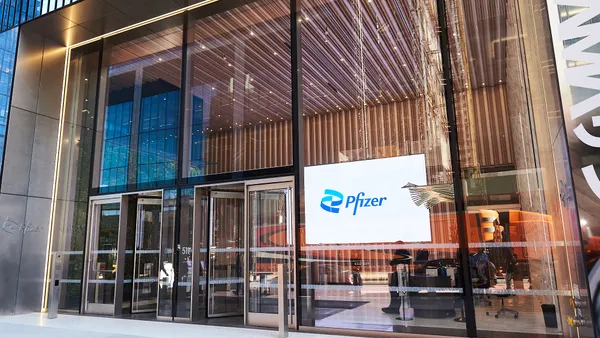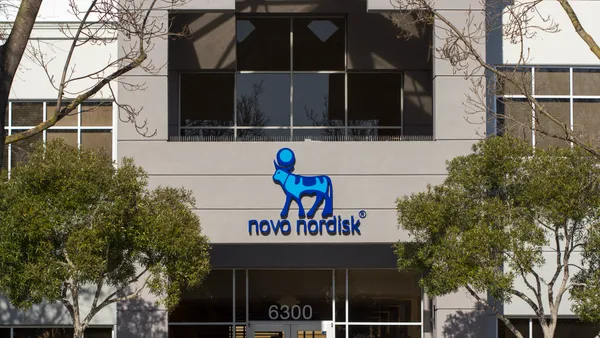E-detailing’s time is about to come. Early adoption issues kept this communication tactic at bay, but as physicians increasingly adopt technology and turn away in-person sales representative visits, e-detailing’s promise is on the verge of paying off. E-detailing, which allows for the interaction between a pharmaceutical representative and a physician through Internet-enabled technology, was expected to be a magic bullet for pharmaceutical marketing. This communication method lets companies reach physicians outside of office hours with targeted sales messages. But reaching doctors online has proved to be more problematic than anticipated, and few companies have achieved the expected return on their initial investments, according to Datamonitor analysis. Additionally, far fewer physicians have adopted the use of e-detailing on a regular basis than was hoped in the medium’s infancy. But there is still hope for e-detailing as many of the problems with uptake by the general physician population, such as the poor quality of the available sessions, the complexity of the technology required, and the speed of Internet connections, are either being actively addressed or have become redundant as more physicians use Internet-enabled technologies throughout their workdays, says Kimberly O’Malley, senior analyst, strategic intelligence healthcare, at Datamonitor. “Therefore, while e-details should not replace traditional detailing, they will soon become an indispensable part of a brand’s marketing campaign,” she says. Lessons Learned for the Future “Five years ago, there were a lot of great ideas about what to do with the cool new digital tools, but the realization of those great ideas required a lot more bandwidth than most stakeholders could muster,” says Maureen Mangiavas, senior director, business development, at The Hal Lewis Group. “We could send e-mails and build Websites, sure. And we did that. But broadcast-quality video? Robust levels of interactivity? High-quality simulations of, say, mechanism of action? All are tough to pull off in a dial-up environment without creating some frustrated users.” Also, partly as a result of slower connection speeds, early e-details were static and more focused on brand awareness and recognition, resembling traditional marketing materials, such as journal ads and sales visual aids, and were primarily used as a stand-alone tactic. But this is changing, according to Barbara Dowling, senior VP, strategy, sales and service, at Lathian Systems. “Enhanced interactivity, compelling clinical data, and programs balanced between education and promotion have been incorporated to create a shift from the traditional e-detailing activity to a more engaging e-learning experience,” she says. “Moreover, programs are now a multimedia engagement as innovative companies integrate rich media, such as streaming video and audio, to maximize impact and brand message retention. The adoption of broadband helped to fuel this innovation; e-details have evolved from presentations that physicians watch to programs in which they actively participate.” And with more than 93% of office-based Internet users and more than 80% of home users accessing the Web via broadband, improved e-details and increased adoption are expected to continue, Ms. Mangiavas believes. Not only are physicians looking at e-detailing more positively, as the technology has become more sophisticated marketers are finding that they can use e-detailing to take better advantage of segmentation strategies, online marketing and recruitment, data collection, analytics, and metrics. “As a result, e-detailing has become more than just a digital sales aid; it has become a vehicle for expanding the overall brand message and addressing the individual needs of the physician,” says Kelly Gratz, president of Blue Diesel. In addition to better technology and increased physician adoption, improved marketer attitudes toward the use of e-detailing as a component of the marketing mix are being driven in part by reduced costs, says Jim Knipper, president and CEO of J. Knipper and Co. “E-detailing is being viewed more positively because it can be used to cost-effectively extend reach and/or augment the frequency of messaging,” he says. “Pharma marketers hope to use it to increase the relevance of messaging across physician segments.” Mr. Knipper finds that e-detailing is a positive component of the marketing mix because it allows some contact with hard-to-see or no-see physicians; it can provide the salesforce with an opportunity to reach a hard-to-see physician; and it can reinforce a consistent message across a physician base. A Complementary Connection E-detailing grew directly out of the need to find additional ways to communicate product information to busy prescribers. With the traditional detailing model experiencing a steady decline in ROI and the increasing expense of face-to-face visits, Ms. O’Malley notes that e-detailing was created to aid sales reps. With nearly half of salesforce visits to physicians’ offices ending at the receptionist’s desk, e-detailing has been traditionally used as a complement to the sales rep, particularly with physicians who have a no-see policy. According to Ms. Mangiavas, e-detailing works the other way too; a sales rep visit can be used as a follow-up to something the physician has done online or inquired about via the Web. “We have to be careful about equating fewer rep visits with a reduction in the amount of ‘personal’ communication a pharmaceutical company has with physicians,” she says. “After all, which is more ‘personal,’ a two-to-three minute chat between a rep and a physician that ends with a handshake and an exchange of a few samples or an ongoing e-enabled dialogue between the physician and the pharmaceutical company during which the doc’s specific questions and concerns are addressed?” Because of the brief amount of time sales representatives usually have to spend with physicians during an office visit, live details are rarely fully comprehensive; often they only cover a small percentage of the sales reps’ intended messages. “Even the best-trained sales reps will fail to communicate their message effectively when forced to condense a full-length detail into a two-minute talk,” Ms. O’Malley says. This is where e-detailing can be a sales rep’s partner, not competitor. E-details are on demand and available 24/7, creating an opportunity for sharing brand messaging when the pharmaceutical rep is not in the office. “Numerous studies show that physicians want contact with their sales rep after viewing an e-detail,” Ms. Dowling says. “The online communication enhances interest and enthusiasm for a brand and makes the physician more open to engaging in deeper product discussions with the representative. And by involving reps in physician recruitment for e-details, companies create another reason for a physician to take time to interact with the representative and can increase overall response rates close to 20%.” According to Ms. Gratz, another key role for the sales rep is identifying which physicians want to be detailed in an online environment versus face to face. “No-see physicians or physicians located in remote locations may be primary targets for an e-detailing platform, but the strategy shouldn’t be limited to just those audiences,” she says. “Some healthcare professionals still prefer a traditional face-to-face detail while others are looking for a combination of online and face-to-face. Marketers need to understand how and where physicians want to digest information and then deliver a customized solution. Technology is just a means to achieve that goal.” Mr. Knipper says marketers who foresee replacing sales reps with e-detailing will need to revisit their assumptions that e-detailing in its current format equates to a rep detail. “E-detailing is viewed by most as an electronic version of a face-to-face rep visit, but in reality the contact by the physician can be anonymous,” he says. “Many practitioners say they don’t want the sponsoring pharma or medical-device firm to know who they are when they participate in an e-detail. And most technology suppliers are more than willing to honor this request, as it helps maintain their value as intermediaries.” Creating Content that Connects Datamonitor research reveals that only one-half of surveyed physicians believe that information provided during live details by pharmaceutical sales representatives is either relevant to their prescribing patterns or fully comprehensive. To fill in the gaps, physicians have become accustomed to accessing information on-demand. As a result it has become difficult, if not impossible, for sales representatives to compete successfully with information found online. As such it is the quality of the content offered during an e-detailing session that will ultimately determine whether physicians complete an e-detail and return for subsequent sessions and whether they follow up with the sales rep in person. Datamonitor reports that the most common types of e-detailing sessions that are used by physicians, such as online slideshow presentations and interactive Websites, are not necessarily of the highest quality or the most ideal mode of delivery per physician feedback. “While e-details delivered via handheld computers or mobile phones were accessed by only about 10% of surveyed physicians in the United States, of those 10%, most ranked these sessions near excellent in quality or delivery combined,” Ms. O’Malley says. Ms. Dowling advocates being compelling and concise when it comes to e-detailing programs and finds that video is an often overlooked but important component that can now be used because of the ubiquity of increased bandwidth. “Marketers should take every opportunity to bring video content to the viewers; the bandwidth is there and video can be used in creative ways that many have overlooked,” she says. “Companies should create peer-to-peer relationships with key opinion leaders online, by layering video with interactive elements as a way to elaborate on information, on-demand. They should consider using 3-D animation to illustrate a complex method of action and give viewers control so that they can digest the data. And above all else, where possible, allow physicians to craft their own experience.” Looking beyond traditional delivery methods to cutting-edge technologies employed in other industries is also a way to keep the e-detailing experience interesting for physicians. To be successful, pharmaceutical marketers and their technology partners will have to evaluate e-detailing through the eyes of practitioners, Mr. Knipper says. “It is logical that physicians who embrace e-detailing are more likely to use other electronic tools offered by pharmaceutical companies,” he says. “In other words, systems should also perform many of the other functions that a pharmaceutical sales representative might ordinarily do on site, such as sample management, alternative sample systems, Web ordering, and e-prescribing. At the minimum these new virtual, electronic market support systems should improve productivity of both the physician and the pharma rep, create cost controls, provide metrics, and create a best-in-class CRM environment.” As pharmaceutical marketers, we can learn a lot from how technology is being used in games, consumer advertising, retail marketing, and other applications, Ms. Mangiavas says. “For example, the most-in-demand toy over the last holiday season was the Nintendo Wii, which is successful because it liberates users from a hardwired connection to a console and allows them to move as if they are really bowling, playing tennis, and so on,” she says. “Imagine the possibilities of an e-detailing campaign keyed to the Wii interface, which could range from surgical simulations to interactive tours of the body that put the user at the helm of a miniature vessel to pure, but branded, fun and games. The possibilities are endless.” On the not so fun-and-games side of the picture, tracking and determining return on investment are also important components of an e-detailing program. “E-detailing provides data and metrics that enable the sales and marketing teams to better understand their audience and tailor programs accordingly,” Ms. Gratz says. “It is critical for any e-detailing platform to track the data and build upon the experience. The tool should continually evolve based on the feedback loop from all facets of the marketing program.” Gaining Acceptance as Part of the Marketing Mix Research shows that most pharmaceutical executives responsible for e-detailing expect to either maintain or expand their e-detailing investments, even as they struggle to integrate the tactic into the broader marketing mix and evaluate how it should be positioned in relation to current sales rep methods and processes. “To be truly effective, the sales and marketing teams must adjust their marketing mix to provide the right message to the right customer at the right time and through the right channel,” Ms. Gratz says. “This approach allows marketers to leverage their segmentation strategies online as well as offline. E-detailing programs are ideal tools to support this new way of working because they can be customized to meet the needs and schedules of individual physicians. In addition, e-programs provide data and metrics that enable the sales and marketing teams to better understand their audiences and tailor programs accordingly.” Datamonitor analysis finds the greatest potential for e-detailing and e-sampling is as a component of an integrated marketing solution. This plays to physicians’ preferences for an integrated electronic sampling and online detailing platform. Experts agree that as e-detailing matures it will soon become a standard campaign element. “The expectation will be, if it isn’t already, that there will be an e-detailing component, or multiple components, to every sales and marketing campaign,” Ms. Mangiavas says. “And, as much as we take for granted the need for printed sales aids and journal advertising, it won’t be too long before we stop thinking of e-detailing as something distinct from the campaign itself.” On the Horizon The outlook for e-detailing in the next five years is positive. Experts expect continued adoption to be fueled by myriad factors, including an increasingly technologically savvy physician base, continued improvements in bandwidth and connectivity, technological advances, as well as the industry’s trend toward downsizing salesforce numbers. “Emerging technological enhancements will effect changes and will continue to multiply the opportunities for reach, choice, and richness of programs,” Ms. Dowling says. “The result will be a significant uptake and participation by physicians, who will increase their use of online programs because of convenience, value, and availability.” Analysts at the IBM Institute for Business Value note that for e-detailing to be successful companies need to build trust — not just dole out data when and where needed — and help to provide doctors with access to valuable, trusted drug information so they can provide better care. Pharma e-detailing will likely follow the same technology patterns as in other industries, Mr. Knipper believes, especially as interactive software and high-end CRM systems become more common. The real question, he posits, is how fast healthcare practitioners will adopt consistent use of e-detailing. “Research shows that e-detailed and non-e-detailed practitioners share similar opinions — both groups agree that the use of the Internet and Internet-based transaction systems, such as e-prescribing, have vastly changed the way medical services can be delivered, 21; he says. “And the practitioners who buy into e-detailing are more likely to adopt broader use of electronic communications for CME, e-prescribing, and electronic communications. The trend seems to indicate that the more practitioners adopt the use of e-detailing the more likely they are to use e-health mechanisms as a way to communicate with constituents, patients, and marketers alike.” Ms. Mangiavas agrees and says to expect to see a blurring and eventual disappearance of the differentiation between “traditional marketing” and “digital marketing.” “In the last half-decade there has been significant retrenchment in terms of sales budgets and resources, which focused attention on cost-effective alternatives to traditional sales and marketing approaches,” Ms. Mangiavas says. “As a result e-detailing is now perceived by many pharma companies as ‘must have’ rather than a ‘nice to have.’ It took this perfect storm to bring us to the brink of realizing the potential of e-detailing. Finally.” PharmaVOICE welcomes comments about this article. E-mail us at [email protected]. E-details delivered via handheld computers or mobile phones were accessed by about 10% of surveyed U.S. physicians; but of those 10%, most ranked these sessions near excellent in quality and delivery. Source: Datamonitor, December 2006 Because Internet usage has increased, high-speed access has become more widely available, and digital technology has evolved e-detailing has become a more practical and affordable option for many pharmaceutical companies. Jim Knipper, J. Knipper and Company Kelly Gratz, Blue Diesel In the current environment of downsizing and the increased use by practitioners of electronic methods, e-detailing can be a valuable sales productivity tool as well as a possible best-practice CRM. An average online sales session costs about $110; an average field representative visit costs $200. Source: IBM Institute for Business Value, February 2006 Sound Bites From The Field PharmaVOICE asked experts how e-detailing will evolve in the next five years and if physician adoption will increase, decrease, or remain the same. Richie Bavasso is President of Exploria SPS, Hartford, Conn., which was a pioneer in the use of tablet PCs as a detailing tool to support pharmaceutical sales representatives. For more information, visit exploria.com. “Much of e-detailing’s growth is attributed to increased physician adoption of the media. Drivers include: need for up-to-date, unbiased information; no desire to see representatives; and need for personalized info not met by broad-based medical-education activities. E-detailing will evolve from commonly defined Internet-based details — prescriber self-directed/pharma call center-directed — to include ‘live’ e-detailing — sales rep use of tablet PC– and direct-to-desktop applications whereby prescribers can access information –and be tracked — from their computers while offline. Used in combination, pharma will reach prescribers after business hours — online, in the office — no line or live rep, and offline –when the prescriber is in transit. Prescriber content preferences, desired media format, and behaviors will be tracked and synchronized to complement continuous refinement of the various forms of e-detailing targeted to that prescriber. The benefit to prescribers is the availability of customized info, in the preferred format, at their finger tips. The benefit to pharma is greater access to hard-to-see doctors and insights into prescribing behaviors. ” Robert Bedford is Senior VP, Sales and Client Relations, InfoMedics Inc., Woburn, Mass., which delivers real-time patient feedback to physicians to demonstrate the effectiveness of a prescribed medication. For more information, visit infomedics.com. “The use of e-detailing will continue to increase and will be driven by a shift in physicians’ preference toward online channels for gathering information, as well as the shrinking number of ‘live’ pharma sales reps in the marketplace. Pharma companies will likely continue to limit or eliminate medically relevant compensation for viewing e-details, which may restrict adoption. To spur greater growth in e-detailing, the industry will need to leverage other proven marketing practices, such as patient feedback and DTC programs, and integrate that information into the e-detail content. Done correctly, this will help morph e-detailing into a valued e-learning experience and avoid physician perception that it is strictly product promotion.” Mike Luby is President and CEO of TargetRx, Horsham, Pa., a sales and marketing effectiveness company providing the pharmaceutical industry with insights into the drivers of physician prescribing. For more information, visit targetrx.com. “The jury is still out on e-detailing, as many companies have come and gone without the widespread adoption that was expected. The survivors are gaining steam, but they need to continue to refine and evolve. Many companies have conducted e-detailing pilots with smaller groups of physicians, but no one company has proven that this technology can be successful on a large scale with thousands of doctors. There is little doubt in my mind that there could be better applications for e-detailing. If a company can crack the code on the value proposition for physicians and pharmaceutical companies, I can envision e-detailing increasing over the next five years. Otherwise, I predict it will decline. ” Barbara Dowling Lathian Systems Currently, best-in-class e-details are immersive and user directed and content choices that shape the experience are driven more by solid e-learning theory than traditional one-way information flow. Maureen Mangiavas The Hal Lewis Group Until now, e-detailing’s promise has always exceeded what it has delivered. But that’s about to change because we’ve overcome some fundamental obstacles related to technology, users, and industry perceptions. More than one-half of physicians in all markets surveyed access at least 40% of their online work-related content from home. Source: Datamonitor, December 2006 50% of dialogues with physicians via Web-enabled live detailing last between 6.5 and 10.3 minutes; another 25% surpass the 10.3 minute mark. Source: HyGro Consulting Group, 2006 Experts on this Topic Barbara Dowling. Senior VP, Strategy, Sales and Service, Lathian Systems Inc., Plymouth Meeting, Pa.; Lathian is a provider of innovative online solutions for relationship marketing using state-of-the-art technology. For more information, visit lathian.com. Kelly Gratz. President, Blue Diesel, Westerville, Ohio; Blue Diesel is an interactive communications company that blends direct marketing, interactive technology, and creative design to provide evidence-based marketing solutions. For more information, visit bluediesel.com. Jim Knipper. President and CEO, J. Knipper and Co., Lakewood N.J.; J. Knipper is a fully integrated pharmaceutical marketing services company. For more information, visit knipper.com. Maureen Mangiavas. Senior Director Business Development, The Hal Lewis Group, Philadelphia; The Hal Lewis Group is a full-service healthcare communication agency specializing in creating and nurturing brands. For more information, visit hlg.com. Kimberly O’Malley. Senior Analyst, Strategic Intelligence Healthcare, Datamonitor, New York; Datamonitor is a business information company specializing in industry analysis. For more information, visit datamonitor.com.
An article from


It's All in the Details
Filed Under:
Commercialization








